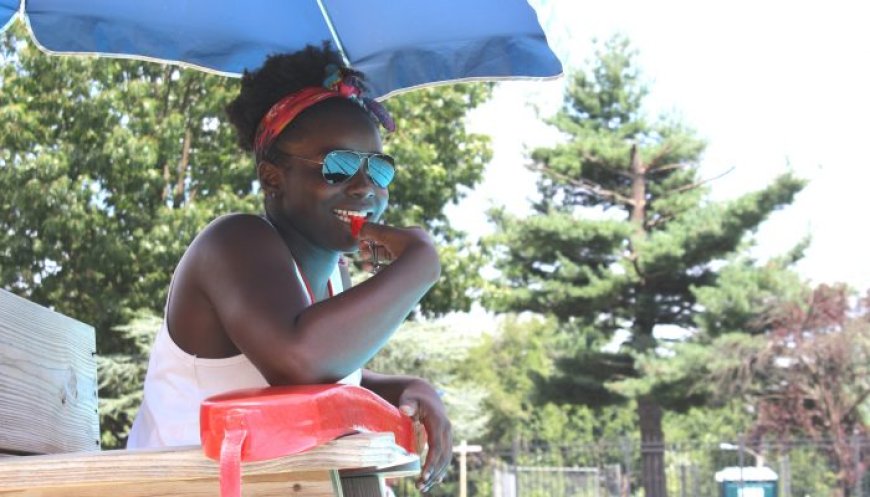New York Beaches Open for Summer, But Lifeguard Shortage Remains a Critical Concern
As of opening weekend, New York City had only 280 certified lifeguards — well below the 1,400 required for full beach and pool operations.

The Start of Summer: Beaches Open, But the Chairs Still Wait
The gates are open, the sand is warm, and the Atlantic is once again welcoming swimmers along New York Citys 14 miles of shoreline. Memorial Day weekend officially launched the beach season, a hallmark of summer in the city. But beyond the sun and surf, a quieter tension persists the citys struggle to staff its beaches and pools with an adequate number of lifeguards remains unresolved.
On opening day, lifeguards were present, whistles at the ready, sprinting into action at hotspots like Coney Island and Rockaway Beach. Their return was reassuring, yet symbolic of a larger issue: there are simply not enough of them to go around.
A Nationwide Crisis in the Citys Backyard
As of opening weekend, New York City had only 280 certified lifeguards well below the 1,400 required for full beach and pool operations. While this number is up from 230 the previous year, the shortfall reflects a national problem. Cities across the U.S. are grappling with lifeguard shortages, as fewer young people choose summer work at the poolside.
Parks Commissioner Sue Donoghue remains cautiously optimistic. Weve seen a 45% increase in recruits last year, and were continuing efforts to grow that number, she said. Those efforts include streamlined training, wage increases, and outreach programs targeting high school athletes.
Recruitment Revolution: Meeting Youth Where They Are
This year marks a turning point in how the city recruits and trains lifeguards. Traditionally, aspiring lifeguards endured lengthy commutes to a single facility in Manhattan. Now, for the first time, exams and training classes are available in four of the five boroughs, bringing opportunity closer to home.
Partnering with public schools, the Parks Department has tapped directly into high school swim teams. The outreach aims to inspire students to view lifeguarding not just as a job, but as a public service and career foundation. The program includes free practice sessions with swim instructors, easing the intimidating entry barrier of the qualifying exam.
Making the Job Attractive: Aesthetic and Economic Enhancements
To boost appeal, the city has raised hourly wages slightly to $22 an hour and offers a $1,000 bonus for returning guards. But money isnt the only motivator. Lifeguard stations are getting a facelift, with updated paint, refrigerators, and microwaves to improve comfort during long summer shifts.
These enhancements may seem minor, but they reflect a broader strategy: treat lifeguards as professionals, not just seasonal employees. By modernizing working conditions, city officials hope to restore pride and permanence to a role often seen as temporary.
Changing Standards: Flexibility Without Compromise
To widen the talent pool, the city has also adjusted the lifeguard qualifying exam. In 2023, the swim time requirement was relaxed from 35 to 50 seconds for a 50-yard swim a move criticized by some but praised by others as inclusive and realistic.
Furthermore, smaller, shallow pools now operate under looser certification requirements, following contract negotiations with the lifeguard union. These measures aim to ensure at least partial coverage, even if ideal staffing isnt met.
A Communitys Perspective: Hope, Trust, and Caution
For New Yorkers, lifeguards represent more than safety they symbolize order and care. Many beachgoers expressed relief at seeing red-clad professionals on duty. Antonio De Leon of Brooklyn, visiting Coney Island with his young daughters, remarked, Weve gotten used to watching out ourselves, but seeing lifeguards out there gives us peace of mind.
Yet, others remain skeptical. Coney Island residents Vlad Moroz and Anastasiia Horokhivska-Moroz said they had never seen a lifeguard on duty in their two years living near the boardwalk. Instead, they traveled to other parts of the beach known to have better coverage.
A Generation of Lifesavers in the Making
For parents like Anastasios Zaharopoulos, the lifeguard shortage is an opportunity. Hes already encouraging his 12-year-old twins, Evan and Achilles, to consider lifeguarding as their first summer job once they reach the minimum age of 16. Its a good skill, good responsibility, he said.
Programs targeting younger swimmers and teens may be the long-term solution. By embedding lifeguard training into youth programs, the city can cultivate future readiness while promoting fitness, responsibility, and community involvement.
Lessons from Tragedy: Why Lifeguards Still Matter
Last year, seven people drowned at city beaches a grim reminder of the stakes when lifeguards arent present. Most incidents occurred when beaches were unstaffed. As Ms. Donoghue notes, We must emphasize the importance of staying safe.
Water safety remains a shared responsibility. While the city boosts staffing and recruitment, residents are urged to remain vigilant, respect flagged warnings, and never swim alone.
The Bigger Picture: Building a Sustainable Safety Culture
New Yorks efforts are more than a seasonal fix. They reflect a shift toward long-term planning, community engagement, and professionalized public service. If successful, the city's approach could serve as a national model for addressing workforce shortages in public safety sectors.
In the meantime, New Yorkers can do their part: stay informed, support lifeguards, and maybe even inspire the next generation to step into that iconic red uniform.
Written by Harlan Elio | Recreation and Adaptation of Original Reporting by Alyce McFadden
Harlan Elio is a writer, researcher, and advocate for public service reform. He writes about urban life, community empowerment, and policies that affect everyday people.


































